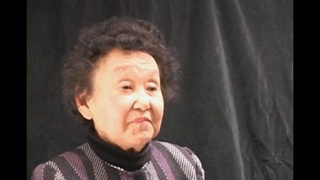Interviews
Jobs in Manzanar
Since I wouldn’t go to work, they gave me a pick and shovel with by brother-in-law. I didn’t know he would be my future brother-in-law at the time. We were working together, we went out there and had to clear the land to build more barracks. We went out there and chopped sage brush and the like.
We didn’t do that very long, and then we got on another job assignment - unloading trucks that were coming in. What we were unloading was all paper wrapped. So finally one, I don’t know if somebody purposefully cut one open. Anyway, one fell out, cylinders like that. This is burlap, and it’s different colors. We couldn’t figure out what this is going to be used for.
Next thing we knew, they had built a camouflage factory outside the camp. All you had to do was go through the fence and walk to that wall right over there, and that’s where the camouflage factory was. It was a great big shape like the barrack but only higher. Because you had to put up these here camouflage netting, the fish net and all that. The girls would weave these different colors of burlap. That’s where I worked in there as more of a supplying the girls. We had to cut that in four or five feet strips.
Date: February 6, 2015
Location: California, US
Interviewer: John Esaki
Contributed by: Watase Media Arts Center, Japanese American National Museum








